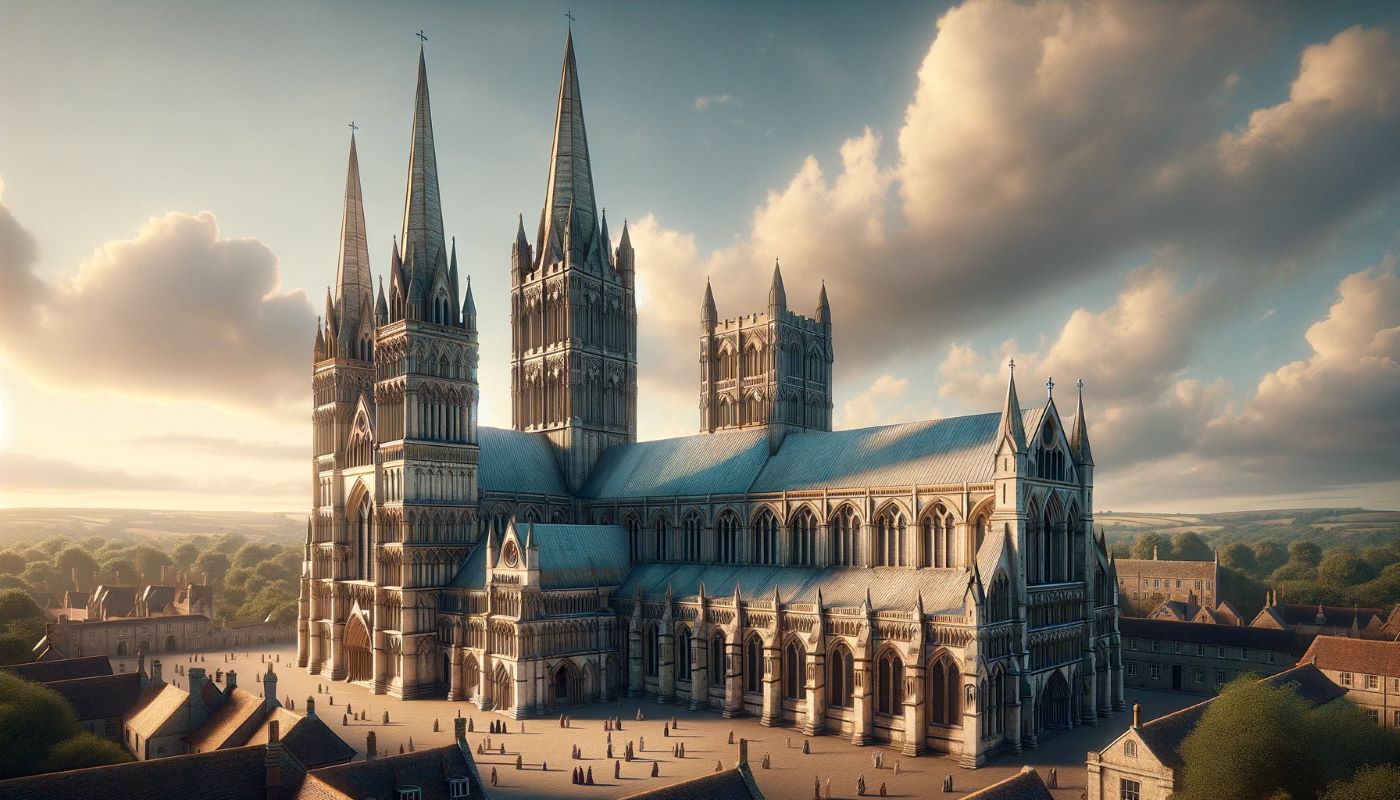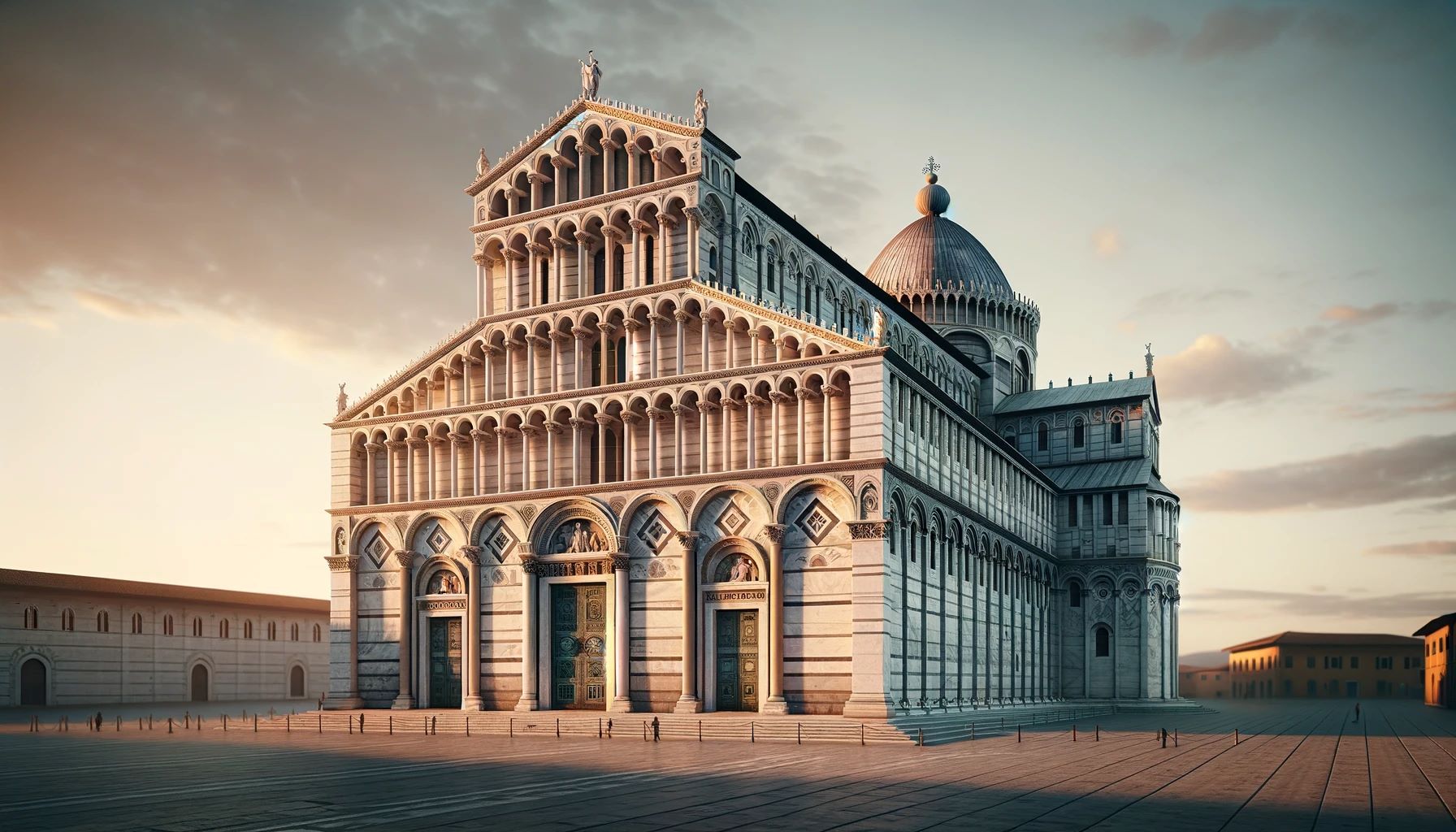Home>Arts and Culture>Which Cathedral Was Used In Pillars Of The Earth?


Arts and Culture
Which Cathedral Was Used In Pillars Of The Earth?
Published: February 16, 2024
Ericka Andersen, an editor at Christian.net, expertly merges digital strategy with content creation, focusing on faith and societal issues. Her communication skills enhance the platform's engaging narratives, fostering meaningful dialogue on belief's impact on society.
Discover the stunning cathedral featured in "Pillars of the Earth" and explore its historical and cultural significance in the arts and culture realm. Uncover the real-life inspiration behind the captivating setting of this beloved novel.
(Many of the links in this article redirect to a specific reviewed product. Your purchase of these products through affiliate links helps to generate commission for Christian.net, at no extra cost. Learn more)
Table of Contents
Introduction
"Pillars of the Earth" is a captivating historical novel written by Ken Follett that has garnered widespread acclaim for its rich storytelling and meticulous depiction of medieval England. The novel, set in the 12th century, intricately weaves together the lives of various characters against the backdrop of political turmoil, architectural marvels, and the timeless pursuit of power and love. One of the most compelling aspects of the story is the central role played by the cathedral, which serves as a symbol of both spiritual aspiration and human ambition.
In this article, we will delve into the historical context of "Pillars of the Earth" and explore the significance of the cathedral within the narrative. Additionally, we will uncover the real-life inspiration behind the cathedral and its portrayal in the television adaptation of the novel. As we embark on this journey, we will unravel the intricate tapestry of history, art, and human drama that forms the foundation of this beloved literary work.
Read more: What Are The Three Pillars Of Lent?
The Historical Background of Pillars of the Earth
Set against the backdrop of medieval England, "Pillars of the Earth" immerses readers in a tumultuous era marked by political upheaval, religious fervor, and the awe-inspiring architectural feats of the time. The novel unfolds in the 12th century, a period characterized by the struggle for power between the monarchy and the church, as well as the enduring legacy of the Norman Conquest. Against this historical tapestry, Ken Follett masterfully crafts a narrative that intertwines the lives of a diverse cast of characters, each driven by their own ambitions, desires, and moral convictions.
The novel vividly portrays the construction of a grand cathedral in the fictional town of Kingsbridge, serving as a testament to the unwavering faith and indomitable spirit of the people who dedicated their lives to its creation. Against the backdrop of political intrigue and social upheaval, the cathedral emerges as a symbol of hope, resilience, and the enduring pursuit of spiritual transcendence.
Follett's meticulous attention to historical detail brings to life the intricate dynamics of medieval society, from the feudal system and the power struggles of the nobility to the daily struggles of the common folk. Through the eyes of the characters, readers are transported to a world where ambition clashes with tradition, where love and betrayal intertwine, and where the grandeur of cathedrals stands as a testament to the ingenuity and devotion of humanity.
As we delve into the historical background of "Pillars of the Earth," we are invited to witness the convergence of art, architecture, and faith in a time of great upheaval. The novel serves as a window into the past, offering a compelling portrayal of the human spirit's resilience in the face of adversity and the enduring legacy of medieval craftsmanship and creativity.
The Cathedral of Kingsbridge
At the heart of Ken Follett's epic tale, "Pillars of the Earth," stands the awe-inspiring Cathedral of Kingsbridge, a monumental structure that serves as the physical and spiritual centerpiece of the narrative. The cathedral, a towering symbol of faith, ambition, and human endeavor, embodies the aspirations and struggles of the characters who dedicate their lives to its construction.
Follett's meticulous descriptions breathe life into the cathedral, portraying it as a testament to the unwavering determination of the people of Kingsbridge. The novel meticulously traces the cathedral's evolution from a mere architectural endeavor to a profound symbol of hope and resilience. As the construction unfolds, readers are immersed in the intricate world of medieval craftsmanship, witnessing the laborious process of shaping stone, the soaring arches, and the delicate tracery that adorn the sacred edifice.
The Cathedral of Kingsbridge becomes a character in its own right, its presence looming large over the lives of the protagonists. Its construction becomes a reflection of the characters' inner struggles, mirroring their triumphs and tribulations. The cathedral's soaring spires and intricate vaults stand as a testament to the indomitable human spirit, transcending the limitations of the era and inspiring awe and reverence in equal measure.
As the narrative unfolds, the cathedral becomes a focal point for the community, drawing together individuals from all walks of life. It serves as a backdrop for love and betrayal, ambition and sacrifice, and the enduring quest for spiritual fulfillment. The cathedral's significance extends beyond its physical form, embodying the collective hopes and dreams of the townspeople and serving as a beacon of faith in a world fraught with uncertainty.
Through the Cathedral of Kingsbridge, Follett masterfully captures the essence of medieval architecture and the profound impact of monumental structures on the human experience. The cathedral's evolution mirrors the societal shifts and personal transformations of the characters, offering a poignant reflection of the enduring power of human creativity and devotion.
In the world of "Pillars of the Earth," the Cathedral of Kingsbridge stands as a timeless testament to the resilience of the human spirit and the enduring legacy of medieval craftsmanship. Its soaring spires and intricate design serve as a poignant reminder of the profound impact of architectural marvels on the lives of those who behold them.
The Role of the Cathedral in the Story
The Cathedral of Kingsbridge serves as a central, multifaceted character in "Pillars of the Earth," influencing the lives of the novel's protagonists and embodying the aspirations and struggles of the community. As a towering symbol of faith and human ambition, the cathedral's role extends far beyond its physical presence, weaving into the fabric of the narrative and shaping the destinies of those who are drawn to it.
At its core, the cathedral represents a testament to the unwavering determination and resilience of the people of Kingsbridge. Its construction becomes a focal point around which the characters' lives revolve, reflecting their inner conflicts, triumphs, and setbacks. The cathedral's evolution mirrors the societal shifts and personal transformations of the characters, offering a poignant reflection of the enduring power of human creativity and devotion.
Moreover, the cathedral serves as a unifying force within the community, drawing together individuals from all walks of life. It becomes a backdrop for love and betrayal, ambition and sacrifice, and the enduring quest for spiritual fulfillment. The cathedral's significance extends beyond its physical form, embodying the collective hopes and dreams of the townspeople and serving as a beacon of faith in a world fraught with uncertainty.
As the narrative unfolds, the cathedral becomes a source of inspiration and solace for the characters, offering a glimpse of transcendence amid the tumultuous backdrop of medieval England. Its soaring spires and intricate design stand as a poignant reminder of the profound impact of architectural marvels on the lives of those who behold them, evoking a sense of wonder and reverence.
In essence, the Cathedral of Kingsbridge emerges as a living, breathing entity within the story, its presence shaping the destinies of the characters and serving as a timeless testament to the resilience of the human spirit and the enduring legacy of medieval craftsmanship. Through its portrayal, Ken Follett masterfully captures the profound influence of monumental structures on the human experience, infusing the narrative with a sense of awe and reverence for the enduring power of human creativity and devotion.
Filming Locations
When the beloved novel "Pillars of the Earth" was adapted into a television miniseries, the task of bringing the grandeur and historical authenticity of the story to life became a paramount endeavor. The filming locations chosen for the adaptation played a pivotal role in capturing the essence of the novel's medieval setting and architectural marvels.
The production team meticulously selected various locations across Europe to serve as the backdrop for the miniseries, seeking out sites that echoed the grandeur and authenticity of the novel's narrative. One of the most notable filming locations was the historic city of Budapest, Hungary, which provided a stunning setting for many pivotal scenes. The city's rich architectural heritage and well-preserved medieval structures offered an ideal canvas for recreating the ambiance of 12th-century England.
In Budapest, the production crew discovered a wealth of historical landmarks and architectural gems that closely resembled the grand cathedrals and bustling towns depicted in the novel. From cobblestone streets to imposing stone structures, Budapest's old-world charm seamlessly transported viewers back in time, immersing them in the tumultuous era of "Pillars of the Earth."
Additionally, the picturesque landscapes and verdant countryside of Hungary served as the perfect backdrop for capturing the sweeping vistas and natural beauty integral to the story. The lush, rolling hills and tranquil rivers mirrored the idyllic settings described in the novel, adding depth and authenticity to the visual portrayal of the narrative.
In addition to Budapest, the production ventured to other European locales, including Austria and Germany, to further enrich the visual tapestry of the miniseries. These diverse locations provided a rich tapestry of historical architecture, natural landscapes, and cultural ambiance, each contributing to the immersive recreation of the medieval world depicted in "Pillars of the Earth."
Through the careful selection of filming locations, the miniseries succeeded in capturing the essence of Ken Follett's epic tale, transporting viewers to a bygone era of architectural splendor, political intrigue, and human drama. The meticulous attention to detail in choosing these locations ensured that the adaptation remained faithful to the novel's spirit, enriching the visual narrative with the timeless allure of medieval Europe.
Conclusion
In conclusion, "Pillars of the Earth" stands as a timeless testament to the enduring power of human creativity, resilience, and the profound impact of monumental structures on the human experience. Ken Follett's masterful narrative weaves together the intricate tapestry of medieval England, capturing the tumultuous era marked by political upheaval, religious fervor, and the awe-inspiring architectural feats of the time. At the heart of the story lies the Cathedral of Kingsbridge, a towering symbol of faith, ambition, and human endeavor.
Through the cathedral, Follett artfully portrays the aspirations and struggles of the characters, mirroring their triumphs and tribulations in its construction. The cathedral becomes a unifying force within the community, drawing together individuals from all walks of life and serving as a backdrop for love, betrayal, and the enduring quest for spiritual fulfillment. Its significance extends beyond its physical form, embodying the collective hopes and dreams of the townspeople and standing as a beacon of faith in a world fraught with uncertainty.
Furthermore, the television adaptation of the novel meticulously selected filming locations across Europe, including Budapest, Hungary, to capture the grandeur and historical authenticity of the story. These locations provided a rich tapestry of historical architecture, natural landscapes, and cultural ambiance, enriching the visual portrayal of the narrative and transporting viewers to a bygone era of architectural splendor, political intrigue, and human drama.
In essence, "Pillars of the Earth" transcends the boundaries of time and space, offering a compelling portrayal of the human spirit's resilience in the face of adversity and the enduring legacy of medieval craftsmanship and creativity. The novel and its adaptation serve as a poignant reminder of the profound influence of monumental structures on the human experience, evoking a sense of wonder and reverence for the enduring power of human creativity and devotion. As readers and viewers alike immerse themselves in the world of "Pillars of the Earth," they are invited to witness the convergence of art, architecture, and faith in a time of great upheaval, ultimately experiencing a profound appreciation for the indomitable spirit of humanity across the ages.














